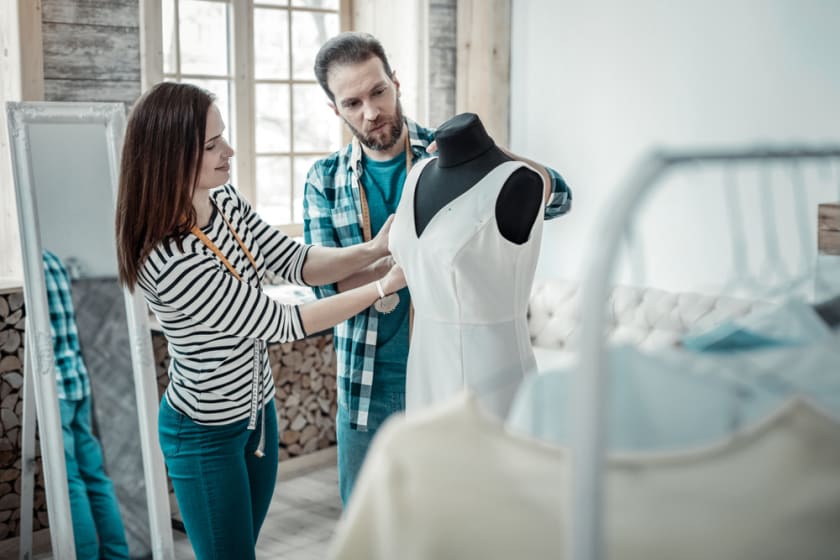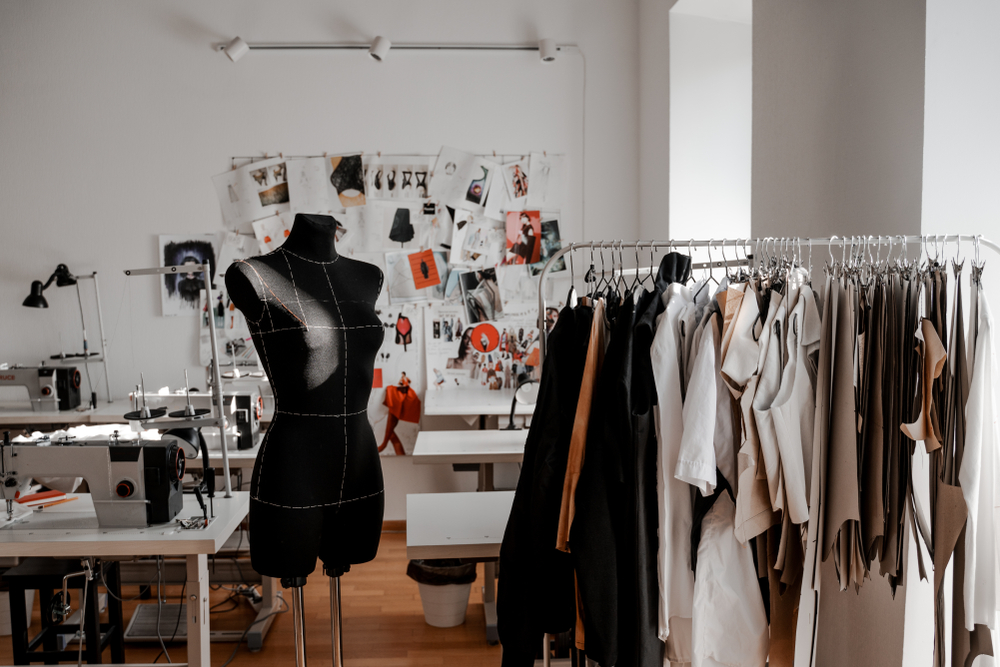Fashion Product Development Process: Explained



Unlike before, the fashion sector is concerned with modern human nature and its clothing demands which developed into the need to pass a personality message via dressing style and clothing (a part of non-verbal interaction/communication).
The role of fashion clothing brands can be challenging as it demands expertise, time, monitoring, assessment, cooperativeness, passion, commitment, and a variety of other factors that must be reflected at the appropriate level to cater to the demands and preferences of customers.
Fashion product development consists of two main steps: product modification and creation, with the typical part - combining the two.
To ensure that the appropriate model reaches its buyer at the right moment and the proper place, the fashion product development requires a huge amount of labor from all entities associated with the operation, including manufacturers, designers, designers, marketing managers, and designers.
Update – The First Fashion Product Development Process
Seasonal collections become updated at least two times per year, while collections for inter-season are frequently published, making the fashion market incredibly adaptable and varied. As a highly dynamic industry, fashion is defined by frequent, thrilling developments in the realm of creation.
However, originality in the fashion business is insufficient within and outside itself, and creative innovations and inventions need a range of complementary abilities to survive, establish a customer audience, and secure their projected sustainability in the marketplace.
Manufacturers' persistent level of uncertainty may be lowered and rendered less certain via implementing high-quality, properly-established marketing operations that build continuous engagement with the customers and the market.
Fashion marketing allows a definite differentiation between a sample that stops in a warehouse and a sample that is attractive, sought after by consumers, and bought for use.
Market research, customizing a structure of services and products offered, long-term connections and engagement with clients, and various other processes are all necessary for the successful establishment of a fashion product. They are also essential to help the product remain in the competition.
This is where Fashinza comes in handy. Fashinza is a B2B apparel manufacturing platform, and they help clothing brands to manufacture their collections by connecting them with suppliers. Fashinza overlooks the entire fashion design process from design to delivery as their partner brands only need to place the order.
The chief offering of Fashinza is its platform using which brands can place an order, track it, receive daily production updates, communicate with manufacturers, and make payments.
Textile and clothing are important manufacturing branches in the market sector of Fashinza as they are export-oriented, labor-intensive, and import-dependent, particularly the fabric business.
Overview of the Fashion Market

Sudden developments define the fashion industry, and stories of winning and losing are frequently tied to administrative adaptability. These markets show common features: high volatility, short lifecycles, high impulse buying, and low predictability.
According to Saviolo and Testa, a pyramid of five market divisions may describe fashion markets based on pricing and competitiveness. The five market divisions include couture, diffusion, prêt-à-porter, mass, and bridge. These divisions could be interpreted as shown below:
- Couture (the first on the pyramid) symbolizes affluent global brands and their demand to convey product value and quality.
- Diffusion - Commercial brands having similar CSFs like the next segment are included in Diffusion.
- Prêt-à-porter - Seasonal items, inventiveness, and high pricing are the focus of prêt-à-porter brands. Product development, quality, and corporate identity are the most important Critical Success Factors (CSFs). This market sector consists of premium brands that are less fashion-driven and provide more timeless merchandise and carry-over.
- The CSFs are connected to the capacity to serve the marketplace at the appropriate time, and they refer to items that bridge the gap between diffusion and mass. Standard of service is far more valuable than style.
- Mass - The least personalized market, mass, is the pyramid base: the essential traits are large quantities and distribution capillarity.
Fashion Product Development Process in the Fashion Industry
NPD or Fashion Product Development is a versatile process in the fashion sector due to the big seasonal demand, dependent on the periodic composition of fashion items. The whole fashion design process is carried out at least twice a year, once for each period, and even with a quick Time-To-Market (1 year and 3 months in the apparel field, 1 within the leather field).
Various product adjustments occur, with constant communication between stylists, designers, and the marketing departments. Once the finished product is on the racks during any particular season, modifications and adjustments are frequently made to make specific re-alignments and re-arrangements.
This way, the product aligns with client desire (e.g., color changes for a sample within the apparel field). In this sense, the fashion product development process proposes a multi procedure that begins with:
- Design
- Prototyping and Modeling (to create the sample pieces that will be displayed during fashion presentations),
- Detail development and engineering
- Material acquisition and finally,
- Manufacturing and distributing
Once the material acquisition is achieved, the manufacturing phase begins, normally lasting three to four months. The sourcing/acquisition process is unique in that it may last from around two weeks to 21/2 months, based on the length of the product release. This is usually held concurrently with fashion fairs and presentations.
A preliminary and general procurement of raw material is sent to suppliers at the start of the acquisition/sourcing stage, and approval of the material amount is supplied at last, with an optimum breach of 20 to 30 percent from the initial stage.
Throughout this short timeframe, the company management must select which goods will be manufactured and which will not once the quantity of sales volume for the current season is determined; correspondingly, the material to order should be specified.
At this stage, most industries also have to complete the engineering step at this stage: for instance, in most scenarios, the finished BOM (Bill of Material) development occurs when orders are already introduced. The BOM and the raw material quotation must be created and filed immediately following the firm's conclusion.
Furthermore, while the fashion shows are taking place, the final choice of what should be manufactured can change quickly (for example, the style of a Celebrity with a specific pouch can change the suggestion concerning the sales volume of that item, and this could occasionally occur on the final day of the final fashion contest).
In several organizations, the engineering stage for every product is finalized before the fashion shows begin, enabling swift sourcing management. However, overburdened the engineering team with invaluable tasks, as genuine finished goods represent a tiny percentage of the entire items shown at the showcases.
Conclusion

The current fashion market's growth and deregulation have resulted in an increasing relevance of specific factors all through the processes, from producing to marketing fashion goods.
Customers are becoming highly sensitive and demanding, both in regards to the design and quality of fashion products and in regards to service delivery speed, sellers' attitude, willingness to exert more efforts in the industry, and organization of facilities designed for sale since the industry has evolved alongside with technological advancement.
Most firms' development processes are highly collaborative; objectives and targets are conducted simultaneously, and employees from various roles offer their expertise and cooperate from the start.
Another point to consider is that small and large businesses compete in the same market. Even though these organizations claim to have similar CSF (quality, reliability, supplier relationships, and so on), their organization and fashion development process are inextricably linked to their mobility and staff numbers.
The more data that must be maintained during the fashion design process, particularly during the sample phase, the larger the organization becomes. This indicates that firms with similar CSF may have distinct capabilities in structure, procedure, and knowledge management capabilities to attain similar performance within the fashion product development process.
In other words, the requirements for the fashion product development process are tied to intricacy, which is associated with turnover and the CSF. When emphasizing the information management of the fashion design process, these elements become more apparent.
Most corporations have knowledge management programs available, even though human experiential learning continues to play a part in these organizations.
Successful fashion firms can identify an ideal link between important aspects and consistently develop and update their business strategies by keeping up with the market, trends, technology, and customers.
A popular trend involves new kinds of marketing on the Web, including via social networking sites. The enormous potential for self-employment and entrepreneurship is primarily pursued by blog owners, so adding to fashion distribution.



















